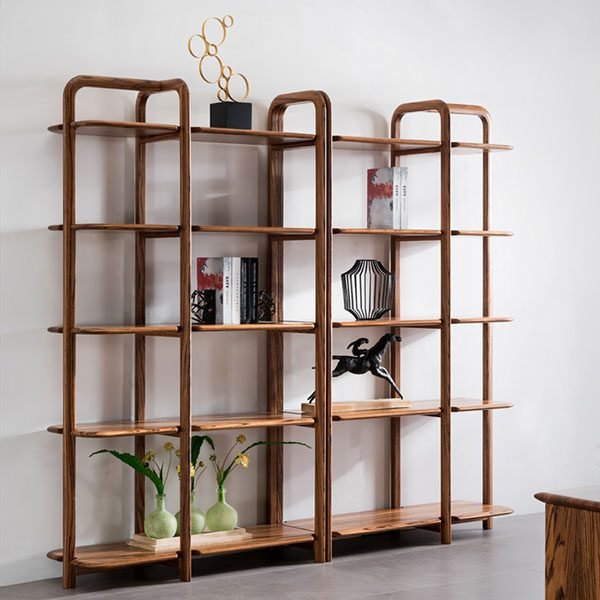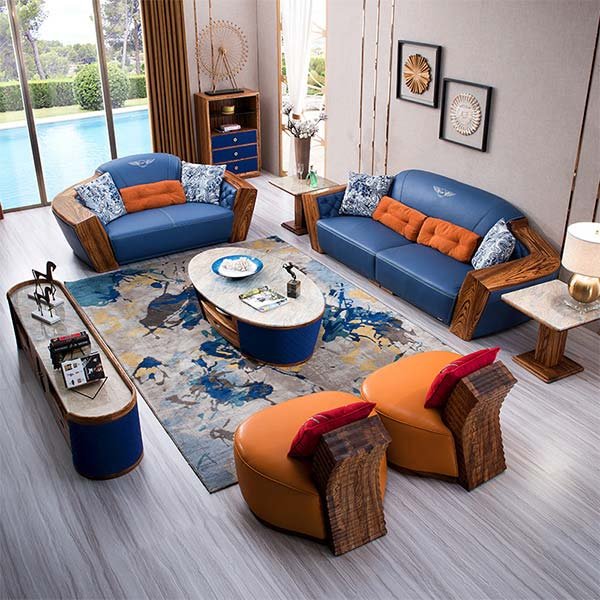“Maximize space, minimize clutter – the key to a cozy small living room!”
Utilize multi-functional furniture
When it comes to organizing furniture in a small living room, one of the most important things to consider is utilizing multi-functional furniture. Multi-functional furniture is a great way to maximize space and functionality in a small area.
One popular option for multi-functional furniture is a sofa bed. A sofa bed can serve as both a comfortable seating option during the day and a cozy bed for guests at night. This is a great way to save space and ensure that your living room is both stylish and practical.
Another great multi-functional furniture option is a storage ottoman. A storage ottoman can serve as a footrest, extra seating, and a place to store blankets, pillows, or other items that tend to clutter up a small living room. This is a great way to keep your space organized and clutter-free.
In addition to multi-functional furniture, it’s also important to consider the layout of your living room. When arranging furniture in a small space, it’s important to think about traffic flow and how people will move through the room.
One tip for arranging furniture in a small living room is to create a focal point. This could be a fireplace, a piece of artwork, or a television. By arranging furniture around a focal point, you can create a sense of balance and harmony in the room.
Another tip is to use furniture that is proportional to the size of the room. In a small living room, it’s important to choose furniture that fits the space without overwhelming it. This may mean opting for a smaller sofa or armchair, or choosing furniture with sleek lines and a minimalist design.
When arranging furniture in a small living room, it’s also important to think about storage solutions. In a small space, it’s important to maximize storage wherever possible. This could mean choosing furniture with built-in storage, such as a coffee table with drawers or a bookcase with doors.
Finally, don’t be afraid to get creative with your furniture arrangement. In a small living room, it’s important to think outside the box and consider unconventional furniture arrangements. This could mean placing a sofa in the center of the room instead of against a wall, or using a console table as a desk or bar.
Overall, organizing furniture in a small living room requires careful planning and consideration. By utilizing multi-functional furniture, thinking about layout and traffic flow, and maximizing storage solutions, you can create a stylish and functional living room that makes the most of your space.
Use vertical space effectively
When it comes to organizing furniture in a small living room, one of the key strategies is to use vertical space effectively. By maximizing the space above and below eye level, you can create a more functional and visually appealing layout.
One way to make use of vertical space is to invest in tall bookshelves or storage units. These pieces of furniture not only provide valuable storage space for books, decor, and other items, but they also draw the eye upward, making the room feel larger and more spacious. Additionally, tall bookshelves can help to create a sense of balance in the room, especially if they are placed on either side of a focal point such as a fireplace or television.
Another way to utilize vertical space is to hang shelves or wall-mounted cabinets. These can be used to display decorative items, store small items, or even hold a television. By taking advantage of the wall space, you can free up valuable floor space and create a more open and airy feel in the room.
In addition to bookshelves and wall-mounted storage, consider incorporating tall furniture pieces such as armoires or cabinets. These pieces can provide both storage and visual interest, while also helping to draw the eye upward and create a sense of height in the room. Just be sure to choose furniture that is proportionate to the size of the room, so as not to overwhelm the space.
When arranging furniture in a small living room, it’s important to think vertically as well as horizontally. By incorporating tall bookshelves, wall-mounted storage, and other vertical elements, you can make the most of the space available to you and create a more functional and visually appealing layout.
In conclusion, using vertical space effectively is a key strategy for organizing furniture in a small living room. By incorporating tall bookshelves, wall-mounted storage, and other vertical elements, you can maximize the space available to you and create a more functional and visually appealing layout. So next time you’re arranging furniture in a small living room, be sure to think vertically as well as horizontally to make the most of your space.
Create designated zones for different activities
When it comes to organizing furniture in a small living room, creating designated zones for different activities can help maximize the space and make it more functional. By carefully planning out the layout of your furniture, you can create separate areas for lounging, dining, working, and entertaining.
One way to create designated zones in a small living room is to use area rugs to define different areas. Placing a rug under the seating area can help anchor the space and make it feel more cohesive. You can also use rugs to separate the dining area from the rest of the room or to create a cozy reading nook in a corner.
Another way to organize furniture in a small living room is to use multifunctional pieces that can serve multiple purposes. For example, a coffee table with storage can double as a place to store books, magazines, and other items, while also providing a surface for drinks and snacks. Similarly, a sofa bed can be used for seating during the day and as a bed for guests at night.
When arranging furniture in a small living room, it’s important to consider the flow of traffic and make sure there is enough space for people to move around comfortably. Avoid placing furniture in front of doorways or blocking pathways, as this can make the room feel cramped and cluttered. Instead, try to create a clear path from one area to another to make the room feel more open and inviting.
In addition to creating designated zones for different activities, you can also use furniture placement to create visual interest and balance in the room. For example, placing a large piece of furniture, such as a sofa or bookcase, against a blank wall can help anchor the space and create a focal point. You can then balance out the room by adding smaller pieces of furniture, such as chairs or side tables, on the opposite side of the room.
When organizing furniture in a small living room, it’s important to think vertically as well as horizontally. Utilizing wall space for storage can help free up floor space and make the room feel more spacious. Consider adding shelves, cabinets, or floating wall units to store books, decorative items, and other belongings.
Finally, don’t be afraid to experiment with different furniture arrangements until you find the layout that works best for your space. Moving furniture around and trying out different configurations can help you discover new ways to maximize the space and create a more functional and stylish living room.
In conclusion, creating designated zones for different activities, using multifunctional furniture, considering traffic flow, creating visual balance, thinking vertically, and experimenting with different furniture arrangements are all key strategies for organizing furniture in a small living room. By carefully planning out the layout of your furniture and considering how each piece will be used, you can create a space that is both practical and visually appealing.
Заключение
Arrange furniture in a small living room by creating a focal point, using multipurpose furniture, maximizing vertical space, and keeping pathways clear for easy movement.



